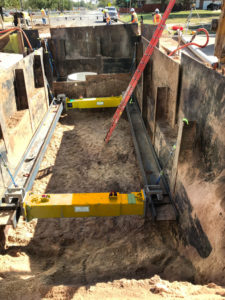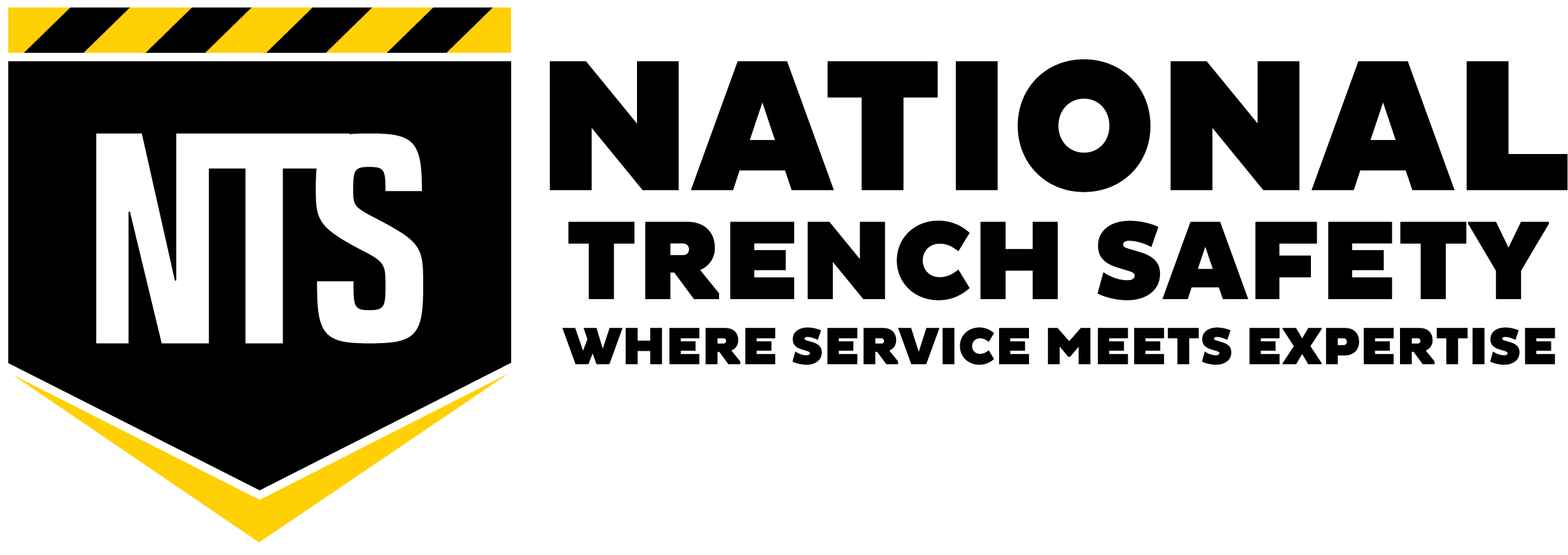Beam & Plate Paired with System-80 Brace Struts Secures Site
As part of the multi-phased project in a major metro area of Oklahoma, a contractor was tasked with installing a 72-inch sewer line system to handle the area’s recent increase in footprint. The excavation required a linear run measuring 10-ft wide and a depth ranging from 22-ft to 26-ft. The competent person on site classified the loose sandy soil as C-80.
Due to the nature of the project, the contractor needed a system that could minimize the width of the excavation and allowed them to dig to the planned depth while securing the excavation walls. To complete this section of the project, the contractor chose to move forward with a linear beam and plate shoring system combined with system-80 struts. Beam and plate shoring systems are site-specific solutions designed for those irregular-sized projects capable of providing large free-span work areas and are composed of H-beams and steel plates. Depending on soil conditions, beams are installed with either a vibration hammer or pushed into pre-drilled pilot holes. On this particular project, due to the adverse soil conditions, a vibratory hammer was used to drive the beams into the ground. Once the beams are installed and spaced, steel plates are inserted through the channels of the beams and pushed to depth. A beam and plate shoring system can be designed for one to four-sided applications and is typically utilized on projects that require an open pit for an extended duration.
The contractor opted to utilize system-80 hydraulic struts to secure the static linear beams. System-80 struts have an operational length that ranges from 8-ft to 12-ft; used explicitly for axial force. Typically, for this particular setup, braces are welded in place. However, by using the hydraulic system-80 struts, the contractor was able to forgo welding walers in place, consequently saving time and reducing cost. The system-80 struts use a gas-powered pump to ensure proper pressure is maintained on the linear beams, holding the walls of the excavation back. Once the 72-inch sewer line and junction boxes have been properly installed, the contractor was able to move onto the next phase of the project. After all phases have been completed, the newly upgraded drainage system will be able to handle the projected new growth in the nearby area. Utilizing the right protective system on the job is paramount.
However, by using the hydraulic system-80 struts, the contractor was able to forgo welding walers in place, consequently saving time and reducing cost. The system-80 struts use a gas-powered pump to ensure proper pressure is maintained on the linear beams, holding the walls of the excavation back. Once the 72-inch sewer line and junction boxes have been properly installed, the contractor was able to move onto the next phase of the project. After all phases have been completed, the newly upgraded drainage system will be able to handle the projected new growth in the nearby area. Utilizing the right protective system on the job is paramount.






